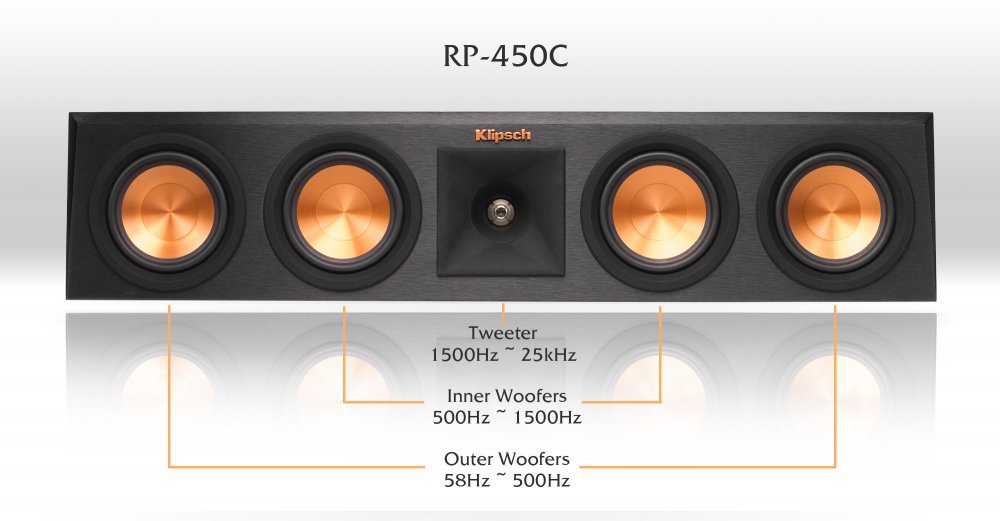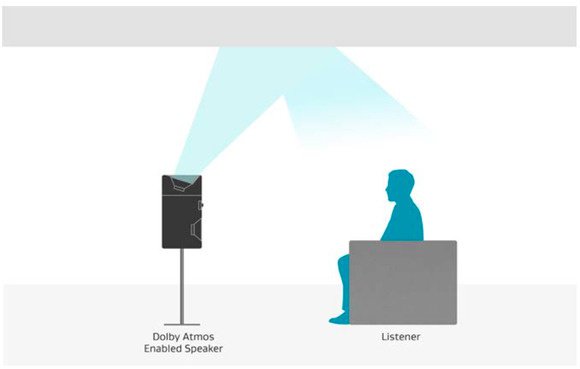
JefDC
Regulars-
Posts
161 -
Joined
-
Last visited
Content Type
Forums
Events
Gallery
Everything posted by JefDC
-
Hello, with Denon/Marantz AVR's it is possible to change the speaker impedance setting to 8, 6 or 4 Ohm. Does someone know what this actually changes inside the amplifier ? Thanks for your time.
-
Difficult question : towers from an entry model line versus a Bookshelf from the Reference Premiere line. I had the RP-160's and R26FA's and found the sound quality of the RP-160's superior to the R26FA's. Using my experience with these I would say it depends of the size of your room and your prefered listening levels. When the bookshelfs where Equalized with Audyssee their bass response was very deep because the amplifier compensated by adding power to the lower frequencies. As a consequence they could not play extremely loud because the limits of the woofer where reached sooner. Please note: they still played plenty loud 🙂 I would advice: Small room and/or normal listening levels : RP600m Large room and/or loud : R28f
-
Measured my RP-404C: Length 66 centimeters, depth 34 cm with grill, 33 cm without grill, height 14.5 cm without rubber feet. Identical with the RP-440C
-
I have a RP-440C and think it is an extremely good Center speaker. Buy it with confidence it will match your RP-160's perfectly.
-
A DLNA compatible server is needed, so I asume any free server software would/could do the trick. I just followed the manual: A server or server software compatible with distribution in the corresponding formats is required to play music files via a network. For playing mentioned audio formats via a network a server software, for example Twonky Media Server or jRiver Media Server, needs to be installed on your computer or NAS for full support. There are other server software available too. Please check supported formats.
-
If your Marantz (or Denon) is connected to a network you can send files in different formats (including FLAC and DSD) from a computer over the network to your AVR. I use JRiver Media Center to do this (you can test this software free for a certain test-period). The files can be 'pushed' (Computer to AVR) or 'pulled' (AVR pulls from Computer).
-
Hello LeftEyeShooter, Mediaelectronics close to Mechelen has quiet a lot of Klipsch speakers including heritage permanent in demo. But indeed the prices here are not comparable to the US.
-
That base is attached with 4 screws and can be removed easily. I did that with mine before putting them on a pedestal.
-
RF-7 III...Trying to achieve better off-center imaging
JefDC replied to adam2434's topic in 2-Channel Home Audio
I used that setup from 2003 till 2012 - and have to rely on 6-year-old memories. Stereo separation or soundstage width was very good sitting left to right - I remember 'showing' this to several people that came to listen. I do think that the room itself and the positioning/distance of the speakers from the walls play as much a role in this effect as the directivity of the speakers. With my present speakers and room, I cannot get the same results. -
RF-7 III...Trying to achieve better off-center imaging
JefDC replied to adam2434's topic in 2-Channel Home Audio
I did the extreme toe-in with my RF-3's, it worked very well. Got a centered image on the couch (2,5 m - 8 ft wide) sitting either left, center or right. -
My Denon does the same thing with DSF files when these are pulled from a PC.
-
These are Dolby Atmos add-on speakers which can also be used as regular surround speakers - like you do. The angular tilt build into these speaker is meant to provide the correct angle to bounce the sound of the ceiling when the speakers are placed flat on top of another speaker.
- 3 replies
-
- atmos
- surround speakers
-
(and 1 more)
Tagged with:
-
Matching Klipsch RP-150M monitor speakers
JefDC replied to rusticman's topic in 2-Channel Home Audio
The RP-150M can handle peaks up to 300W. The Denon AVR-X2200W is just fine, the most important factor is that the amplifier delivers undistorted clean power. You could go even higher in the max rated power of an amplifier for those speakers - up to 300W. The continuous power specification relates to how much heat the speaker can handle (dissipate) when playing (very) loud for long periods of time. It's all rather 'theoretical' as in a normal situation (home use) the average power delivered to the speakers is <1 Watt. -
I had a pair of Qb's in 1979 and Qjr's later. The tweeter can be removed from the front, if he is broken look carefully to the foil inside, you will see an etched coil on the foil. If the coil is burned out you can disassemble the tweeter and repair the coil with a soldering iron. I remember doing that once, re-assembling the tweeter was quitte difficult because of the strong magnets. The (foam) surrounds of the woofer of the Qjr were indeed decomposed about 15 years later
-
Improve on current built in home theater listening setup
JefDC replied to King Kong's topic in Home Theater
The Denon AVC-X8500 is capable of 7.2.6 without external amplifiers. -
Which subwoofer is the ideal to accompany the KLIPSCH R15PM?
JefDC replied to Jose's topic in Subwoofers
'I want it above all to feel the explosions, shots, rain, thunder, demolitions, destruction in the games.' Maybe this ? http://www.earthquakesound.com/index.php/en/home-audio-division/home-products/tactile-transducers/item/mqb1 around 180€ -
Hello, you wrote : <snip> I run the marantz audyssey setup and then went manually to touch the central speaker and raise it up 5db more. Im quite happy with the movie dialogs they sound crystal clear <snip> Did you alter the setting in the 'Speaker' set-up menu to achieve the +5dB ? If so; I would suggest to use the 'Dialog Level Adjust' in the 'Audio' set up menu. This adjustment is specifically for that purpose and provides a range of -12dB to +12dB without upsetting the reference values of the Audyssey measurement. jef
-
Why is Frequency Response of RP-150M Better Than RP-450C ?
JefDC replied to Kris's topic in Home Theater
Kris, compared to the RP-250F I see the following differences: Volume: 4210ci versus 3076ci = 36% more - that is not really 'close' and not taking into account that the 450C has 2 woofers more which take up more internal volume as well. Power: the RP-250F maximum allowed peak power is 400W versus 600W for the 450c = 33% less and the sensitivity is a moderate 1 dB lower. All this combined explains - to me - why the RP-250F is capable of a lower frequency of 35Hz versus the 58Hz of the 450C. 2 Woofers of the 4 have Band-Pass filter of 500Hz-1500Hz (see picture ) the 2 other Woofers have a Low Pass filter up to 500Hz So basically - no the Center speaker does not have a filter that limits it's lowest frequency - that is a result of the tuning of the cabinet. Jef -
Why is Frequency Response of RP-150M Better Than RP-450C ?
JefDC replied to Kris's topic in Home Theater
My guess is that the sensitivity difference between the speakers is responsible. The RP-150M has a sensitivity of 93dB/1m and the RP-450c has a sensitivity of 97dB/1m i.e 4 dB higher with the same model of woofers (and tweeters) To achieve that increased sensitivity with the RP-450c the loudspeaker must be tuned to a higher frequency. Jef -
I have reread your posts and see I made a mistake with the 3.0.2 - you wrote you have side surrounds. That will do just fine.
-
I have an Atmos system (5.0.4) and really like it. Out of curiosity I just tried the setup without rears (3.0.2). It works but not very satisfying because you don't get the sound bubble that Atmos provides - at least you need rears - the difference is huge. 2 Atmos speakers are sufficient 4 are not really needed.
-
For Europe check this: https://www.son-video.com/article/home-cinema-packs-d-enceintes-packs-d-enceintes-grand-spectacle/klipsch/rp-8000f-hcs-5-1-noir I bought from them in the past with no problems - do note there is a delay for delivering at the moment. They have several other interesting packages at the moment as well.
-
I was going to tilt the loudspeaker backwards so that the reverb sound would reach, so I thought it would be better. There is no harm in experimenting with the tilt - but I did not have much succes with it. However, to follow your indication, I can achieve my effect by setting a greater distance to the ceiling, because I am sitting from loudspeakers (180cm) 10ft. Question on what value was the distance to the ceiling set? I have experimented with values up to 3.3m (the maximum) I understand that the speakers have been in the same place all the time? Yes Has Audyssey calibration been done after each change? Not after each change (changing the height distance setting is very easy and fast to do)
-
As you can see in the attached drawing there is a minimum and maximum distance where you can hear the Atmos reflected sound. My speakers have almost the same distance to the ceiling as yours (5.3 ft - 160cm) and I hear the optimum effect at a distance of 6ft from the speakers. Tilting the speakers forward does NOT really help projecting the sound further because the amount of direct sound coming from the elevation speakers increases as well. I did play with the 'distance to ceiling' setting in my amplifier and increasing the distance does give the impression that the reflected sound comes forward i.e. better overhead sound impression when sitting at a distance of 10 ft from the speakers.
-
Use the Dolby Atmos demo disc and verify by ear. When the reflection is correct you can hear the sounds clearly from above. It is also possible to use the noise sources build in many ATMOS receivers.





